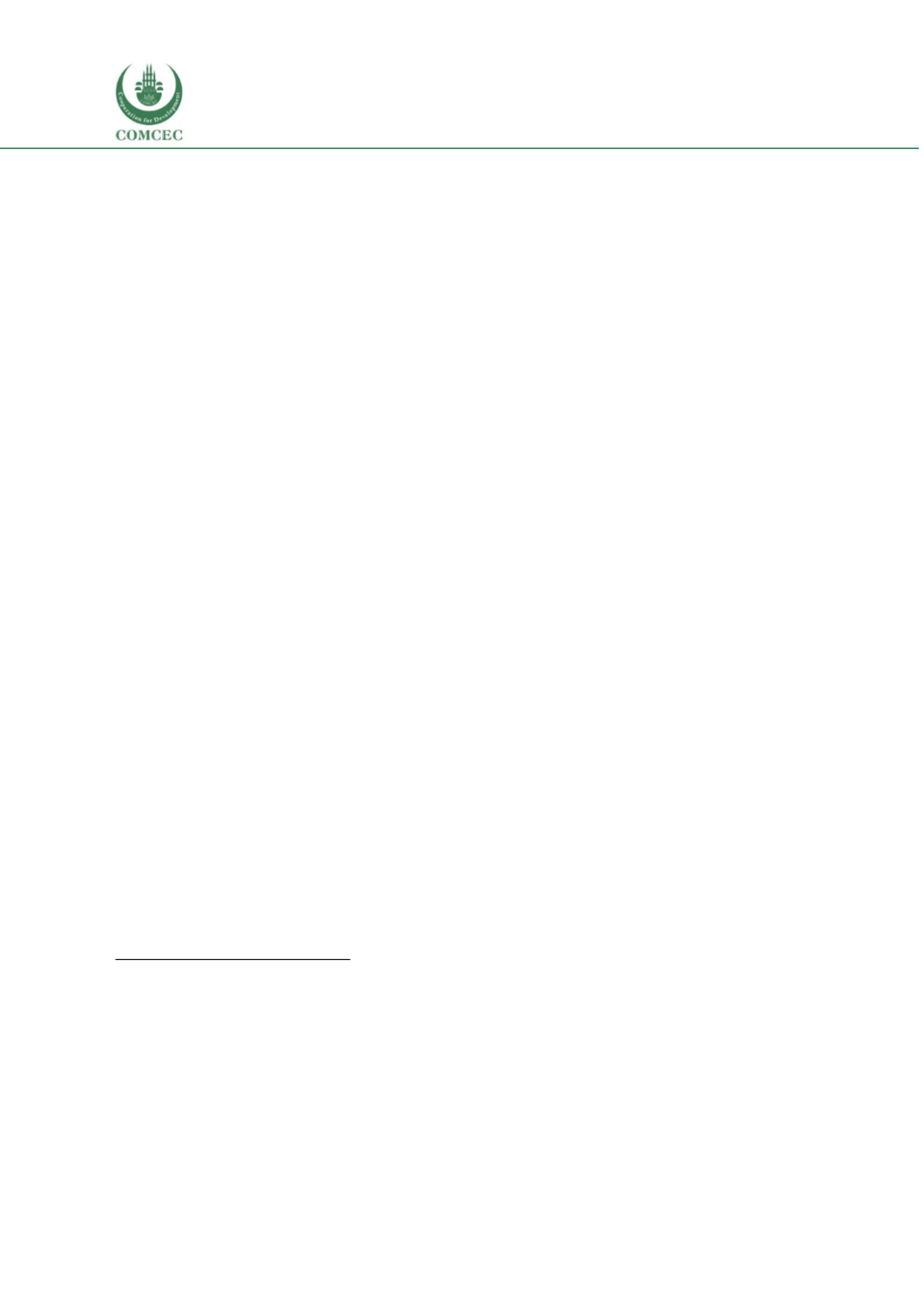

Education of Disadvantaged Children in OIC:
The Key to Escape from Poverty
60
impact evaluation of the program found that the ROSC program resulted in an increase in
enrolments by 9 to 18 percent in the areas they were established compared to non-ROSC areas.
191
To solve the teacher deployment problem in remote areas member countries like Gambia,
Mozambique and Uganda employed policies that provide teachers financial incentives
when they serve in remote areas.
192
For instance, in Gambia, a hardship allowance in the scale
of 30 to 40 percent of the average salary started to be distributed in 2005 to teachers working in
hardship areas.
193
Hardship areas are in regions that are furthest from the capital city and at least
3 kilometers from a main road. An evaluation of the impact of the hardship allowance program
found that the share of qualified teachers in remote areas increased by 10 percentage points
compared to non-hardship areas.
194
Apart from access, quality of education was found to be a general issue in member countries
according to the findings presented in the previous section. To manage this problem, good
practices in the OIC include taking international assessment tests at the macro level and working
with community participation forms at the micro level.
International assessment tests are valuable tools for monitoring the general quality of
education for participating countries and many OIC countries are taking part in them now.
In 1995, when TIMSS was first applied in the World, only Iran and Kuwait participated in the test
out of the 57 OIC member countries.
195
The number of test taking OIC countries increased to 15
by 2015. In TIMSS 2015, along with Iran and Kuwait, Bahrain, Egypt, Indonesia, Jordan,
Kazakhstan, Lebanon, Malaysia, Morocco, Oman, Qatar, Saudi Arabia, Turkey and United Arab
Emirates were the other participating member countries from OIC.
196
Examination of TIMSS
outcomes resulted in reviews or changes in the curriculum of schools in countries like Indonesia,
Iran and Lebanon and led to the development of a five year plan in Qatar to meet international
standards.
197
Community participation in education systems could be useful in increasing the quality of
education and is employed in a number of OIC countries in different forms.
Community
based monitoring is found to be useful in increasing accountability and hence increasing school
success in Uganda. In 1997 a newspaper information campaign started in the country in response
to leakages found in public funds which failed to reach schools.
198
With the campaign, newspapers
reported monthly education grant transfers to districts with the aim of giving the possibility to
monitor the funds to parents and head teachers. While in 1995 an average school received
191 Dang, Sarr, and Asadullah (2011)
192 UNESCO (2010)
193 Pugatch and Schroeder (2014)
194 Pugatch and Schroeder (2014)
195 Institute of Education Sciences - National Center for Education Statistics (2017)
196 Institute of Education Sciences - National Center for Education Statistics (2017)
197 See TIMSS & PIRLS International Study Center (2017a) for Indonesia, TIMSS & PIRLS International Study Center (2017b)
for Iran, TIMSS & PIRLS International Study Center (2017c) for Lebanon and TIMSS & PIRLS International Study Center (2017d)
for Qatar.
198 Bjorkman (2006)
















